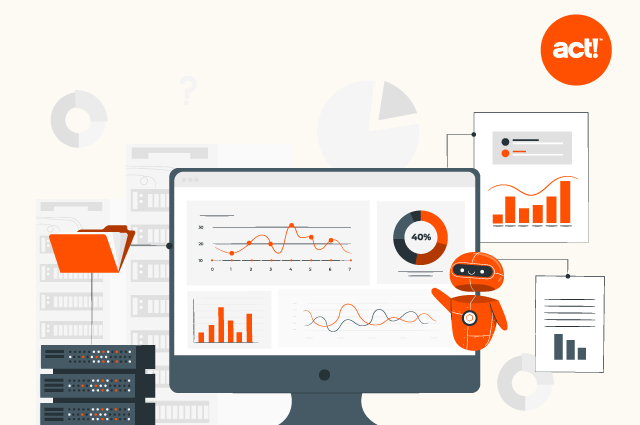
It’s probably no surprise that this last year came and went in a blur, and now we’re talking about the smart strategies we want to implement in 2023 to be more efficient and productive than ever before.
Learning about the newest small and mid-sized business (SMB) technology trends in the coming year can help you make superior data-driven decisions on which tech to buy and implement in your business. But, despite the enthusiasm that many of us share over new products and how they can improve our workflows and business models, 61 percent of SMBs in the U.S. regret a technology purchase they’ve made in the last 12 to 18 months.
We don’t want that to happen to you so we’ve done the research for you and found the top small business trends in technology to help you take your small business to the next level in the new year.
What new SMB trends will be popular in 2023?
The very definition of SMBs separates them from larger businesses, making their SMB solutions and technology requirements will differ. These are the trends that matter most to your small business, including startups.
SMBs are adopting new and innovative tech faster
COVID-19 continues to make a huge impact on tech trends as businesses worldwide continue to adapt to hybrid work environments. Small businesses suffered more job losses than larger companies, making the last few years especially challenging for them.
But small businesses are realizing the important role the latest tech plays. The number of smaller companies that want to avoid falling behind in technology and business goals increased from 52 percent last year to 63 percent this year. SMB owners are smart, resilient, and in it to win it.
To achieve this, SMBs had to adopt technology quickly in 2020 to maintain profitability and employee productivity, and we continue to see the ripple effects today. Small and medium businesses everywhere are prepared to avoid the problems they faced when the pandemic started.
As they settle into the post-COVID grind, SMBs are diving headlong into adopting new technologies like marketing automation and productivity tools and learning to use these technologies in a way that is authentic to their company cultures.

Automation
In 2023, more small businesses are looking at workplace automation to save money, address problem areas, and automate tedious manual tasks such as managing data, reminders, and even customer engagements.
If you’ve ever booked an appointment and received a confirmation text message or email, that’s an example of automation taking care of tedious manual tasks. Especially in light of challenging employee shortages, automation can help you ensure increased cash flow, manage inventory, and more — with fewer workers.
Small business owners have a lot to do with fewer resources than larger companies, and sometimes it can feel like a neverending to-do list just keeps getting longer. In fact, results from our recent survey of over 1100 SMB owners show that over 69% of SMB owners do all of their own sales and marketing. With that said, it’s easy to see how small business owners wear many hats, and that can test their time management skills, which accordingly to Forbes, ultimately contributes to their success.
Since we can’t clone ourselves (yet), automation is the next best thing. And once you see the time you save, you’ll want to apply automation wherever possible.
Artificial Intelligence
Artificial Intelligence (AI) will continue to be popular in 2023. Its ability to predict consumer behavior and quickly synthesize large volumes of data will prove invaluable for SMBs. One of the best uses of AI is to create a personalized customer experience for buyers by automating manual tasks and streamlining the process.
And while many may worry that AI will replace human workers, there are many things humans can do that AI can’t, such as learning the soft skills that companies of all sizes value, including problem-solving, critical thinking, and conflict resolution. Still, AI is invaluable as it can act with near-human intelligence and superhuman speed to solve problems and make decisions.
Cybersecurity

Did you know that 61 percent of SMBs have been victims of at least one cyberattack? Despite that fact, almost 60 percent of small business owners think they are unlikely to be a target of data breaches or cyberattacks.
Cybersecurity protects small businesses from becoming victims of cybercrime, like data breaches where your data or your customers are exposed. It prevents you from facing huge financial losses and damages your reputation.
Since a good reputation and profitability are two vital elements of a business’s success, more small business owners are looking for cybersecurity tools and insurance. For instance, antivirus software can detect and fix computer viruses, and next-generation firewalls protect against a variety of threats. All told, the cybersecurity market is expected to grow to $14.8 billion by 2025.
Live chat and conversational marketing
In 2023, conversational marketing and chatbots will be everywhere. If you’re not sure what exactly conversational marketing is, it involves engaging with potential and existing clients on a conversational level instead of straight-up selling.
Instead of speaking to consumers as traditional direct marketing does—with one-way communication—conversational marketing invites them to have a conversation with you for purposeful interactions. By welcoming them and telling them more about your products and services, you’re helping them find the right offer or product for them.
This type of marketing allows for faster engagement and speeds up the buyer journey. Adding new channels to engage with new customers—such as social media messaging, chatbots, and SMS—allows buyers to get the fast response they are looking for. By combining these with email, phone, and social media channels, SMBs can meet their customers where they are to provide better customer service.
Remote onboarding
As businesses everywhere continue to embrace hybrid and remote work environments, the need for remote onboarding grows. Onboarding new employees is a vital part of business, and companies need new technology to do this efficiently.
Employees face several obstacles when they start new remote jobs. The stats show that more than 60 percent of new employers leave their careers in the first year because of bad onboarding experiences. SMBs aware of these obstacles can address them throughout the onboarding process.
Since remote onboarding can be tricky, you need to choose the best tool for your small company. The technology goes beyond webinars, video chats, and interviews.
Other tools like airSlate can reduce the amount of physical paperwork by creating compliant document workflows with features and templates that allow you to share materials virtually on the cloud. (If you’re not using cloud computing yet, you should adopt this new technology in 2023.)
The tool that can help you level up your business
Now that we’ve shown you some important SMB technology trends for 2023, you may be wondering how you can introduce automation, conversational marketing, and other tech into your business next year.
Leveraging the right tools makes all the difference in getting started. An integrated CRM and marketing automation platform like Act! can be deployed in any size of business for a reasonable price and integrates with most of the tools you’re already using to help you hit the ground running, nurture your existing customers and attract new leads. Act! can help you change the fundamentals of your business operations and accelerate your digital transformation.
Curious? Try Act! for free for 14 days.






